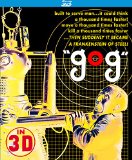| Reviews & Columns |
|
Reviews DVD TV on DVD Blu-ray 4K UHD International DVDs In Theaters Reviews by Studio Video Games Features Collector Series DVDs Easter Egg Database Interviews DVD Talk Radio Feature Articles Columns Anime Talk DVD Savant Horror DVDs The M.O.D. Squad Art House HD Talk Silent DVD
|
DVD Talk Forum |
|
|
| Resources |
|
DVD Price Search Customer Service #'s RCE Info Links |
|
Columns
|
|
|
Gog 3D
1954's Gog is one of three movies of that decade involving the "Office of Scientific Investigation", or OSI for short- a fictitious government agency that checks out odd goings-on at places like research labs. Here the OSI sends Dr. David Sheppard (Richard Egan) to look at a secret underground lab in the middle of a desert which has been doing research related to space travel and its effects, after a scientist freezes to death being mysteriously locked inside a room where tests were held. From what we can see of this, the doors automatically locked with him inside and then the test equipment froze the room with no one around to stop it until it was too late. Sheppard tries to find the cause of this with the help of fellow agent Joanna Merritt (Constance Dowling) although the two of them are often distracted flirting with each other. They're also guided by and given explanations from Dr. Van Ness (Herbert Marshall), the head director of the lab.
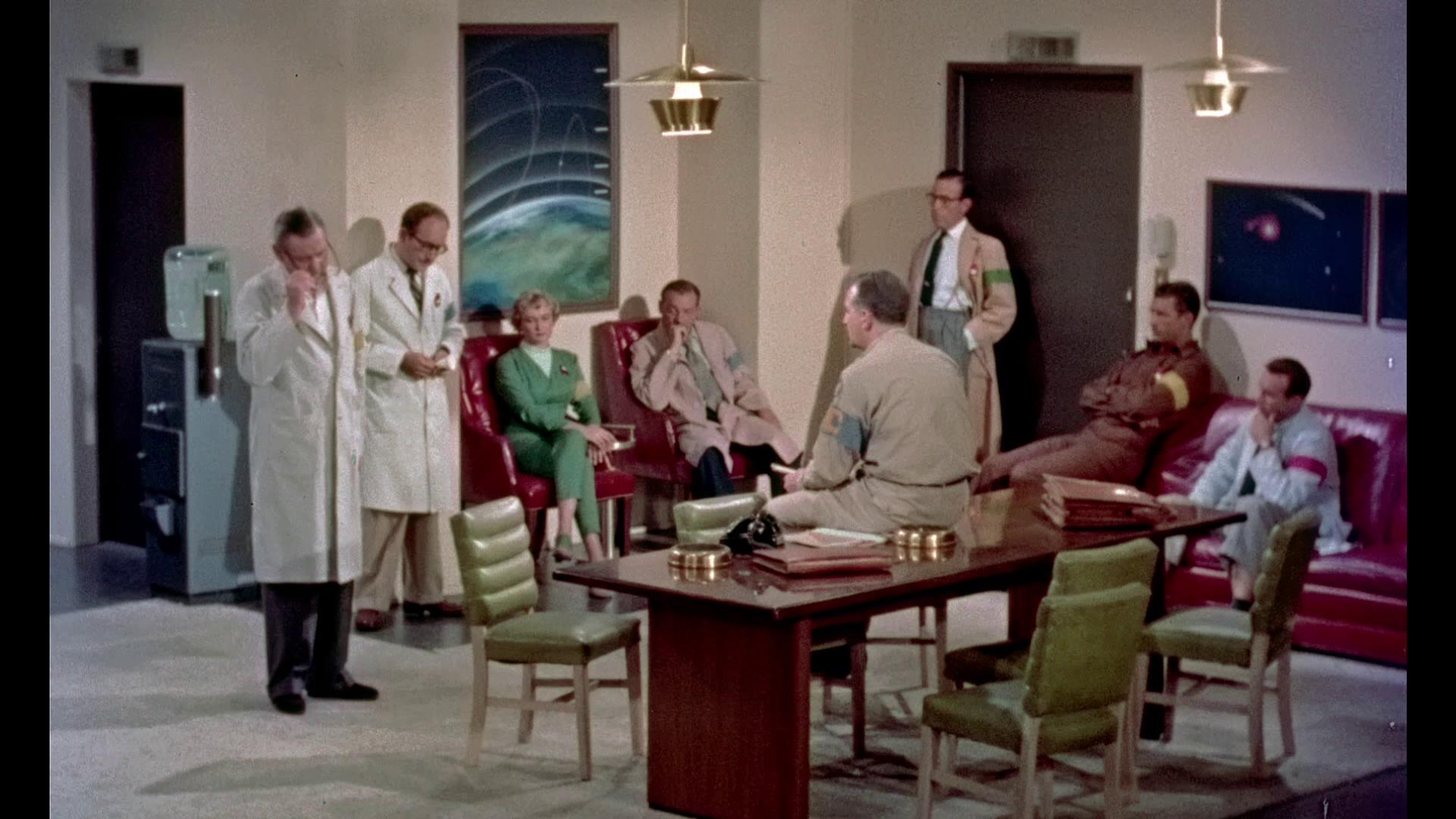
The first half of the movie almost feels like an educational film, as Sheppard is shown around the underground installation and given jargon-filled explanations on a number of experiments, including a zero-gravity environment- first-time viewers may wonder what the point of all of this is, but as this was the 1950s many of the things shown here were new concepts and it was fascinating at the time to see many of these become reality in the following decade. We see a few other things start going wrong, including two would-be astronauts being knocked out spinning on a centrifuge that won't respond to any of the controls trying to turn it off. Eventually the tour leads to NOVAC (the Nuclear Operative Variable Automatic Computer), a system taking up a large area of a room that centrally controls everything in the underground installation and where the problem likely lies. That room also houses two robots, Gog and Magog, which suddenly get out of control and wreak even more havoc.
Gog was previously released as a DVD-R from MGM and fellow reviewer John Sinnott described the movie as "talky", which I certainly agree with. While the movie's original posters and trailer tried to sell this as a thriller and described the title robot as "a Frankenstein of steel!" not a whole lot happens before the movie's final act and the promotional materials are rather laughable after actually seeing the movie. Still, it works well now as a period piece when space travel was just about to become a reality, and the story behind this Blu-Ray release is even more compelling than the movie it features.
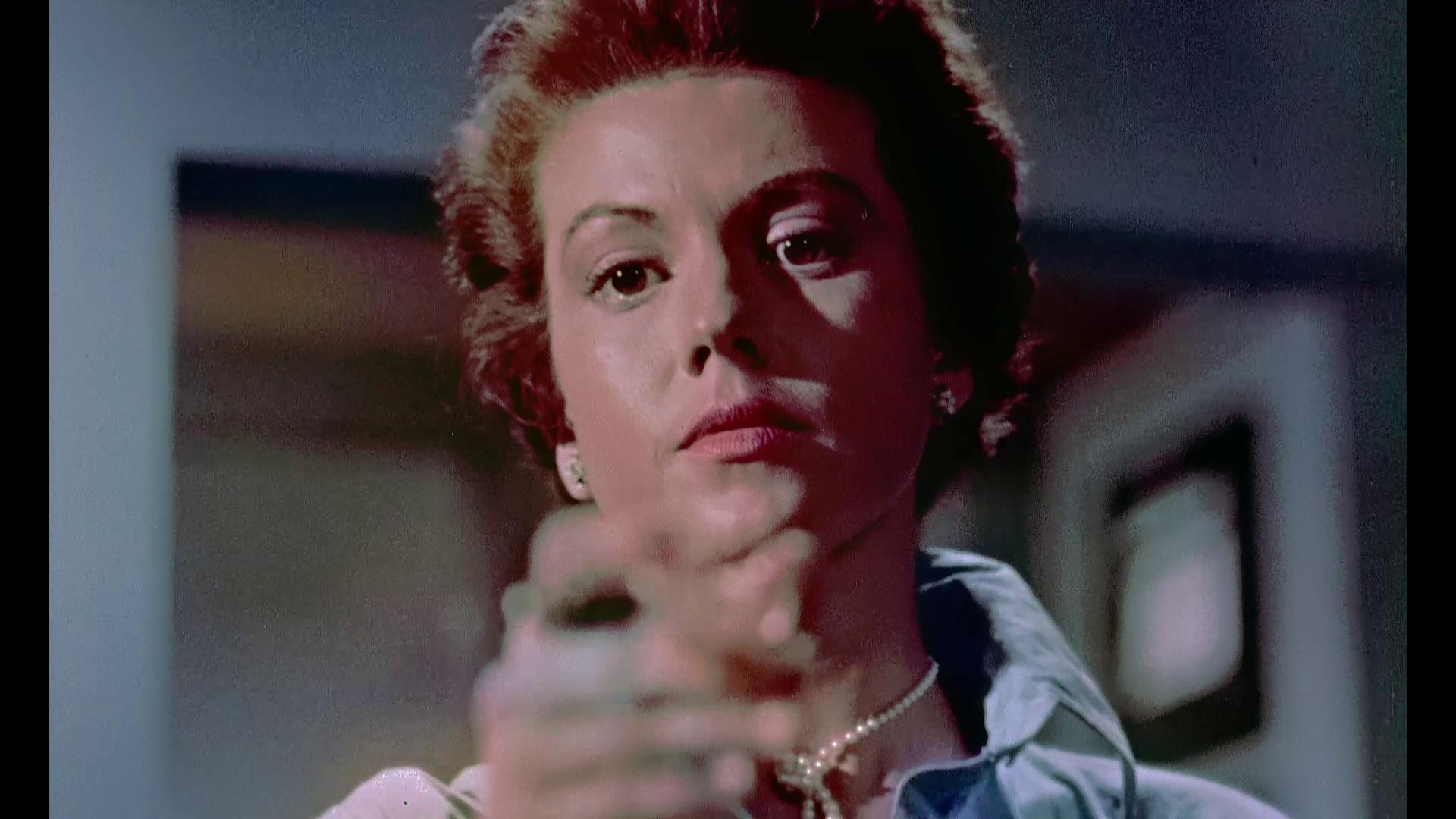
Gog was one of the last 3D movies made during the brief boom of 1953, and oddly the only one I had not heard of until news of this disc release. Shot with the two-camera Natural Vision system, the movie only played in 3D in five theaters, with the rest opting to play it in 2D due to widespread problems many had with running two projectors simultaneously in sync with each other. To add even further injury, the color movie played on TV in black and white in the following decades. A 2D color print using the right-eye view was at least able to be put together for the prior DVD-R release, but the full 3D movie was considered "lost" and may well have been if not for the efforts of 3D film archivist Bob Furmanek (who has brought us several other great 3D Blu-Ray discs including The Bubble and the absolutely essential "3-D Rarities" compilation). This story is well-described in the disc's extras, but essentially he was able to locate what was possibly the only surviving print of the left eye view and restore it to what you see here. While the 3D photography here is very good (even more remarkable considering director Herbert L. Strock was blind in one eye and could not even see 3D properly, similar to the situation with House of Wax's director Andre DeToth), surprisingly it's hardly exploited at all and likely 2D audiences didn't realize what they were missing. The opening shot of a needle being thrust at the audience is certainly a good start, but many other opportunities for 3D gimmicks aren't taken (such as a fire extinguisher seen being aimed downwards, rather than right into the camera.) There's still a strong use of depth throughout, with foreground objects often appearing up-front like you could reach out and touch them as the actors behind them do and the robots are later given a few chances to attack the cameras. An amusing side effect of the 3D is the fakeness of the backdrops showing a view further into the deep recesses of the installation is very obvious, as they appear flat.
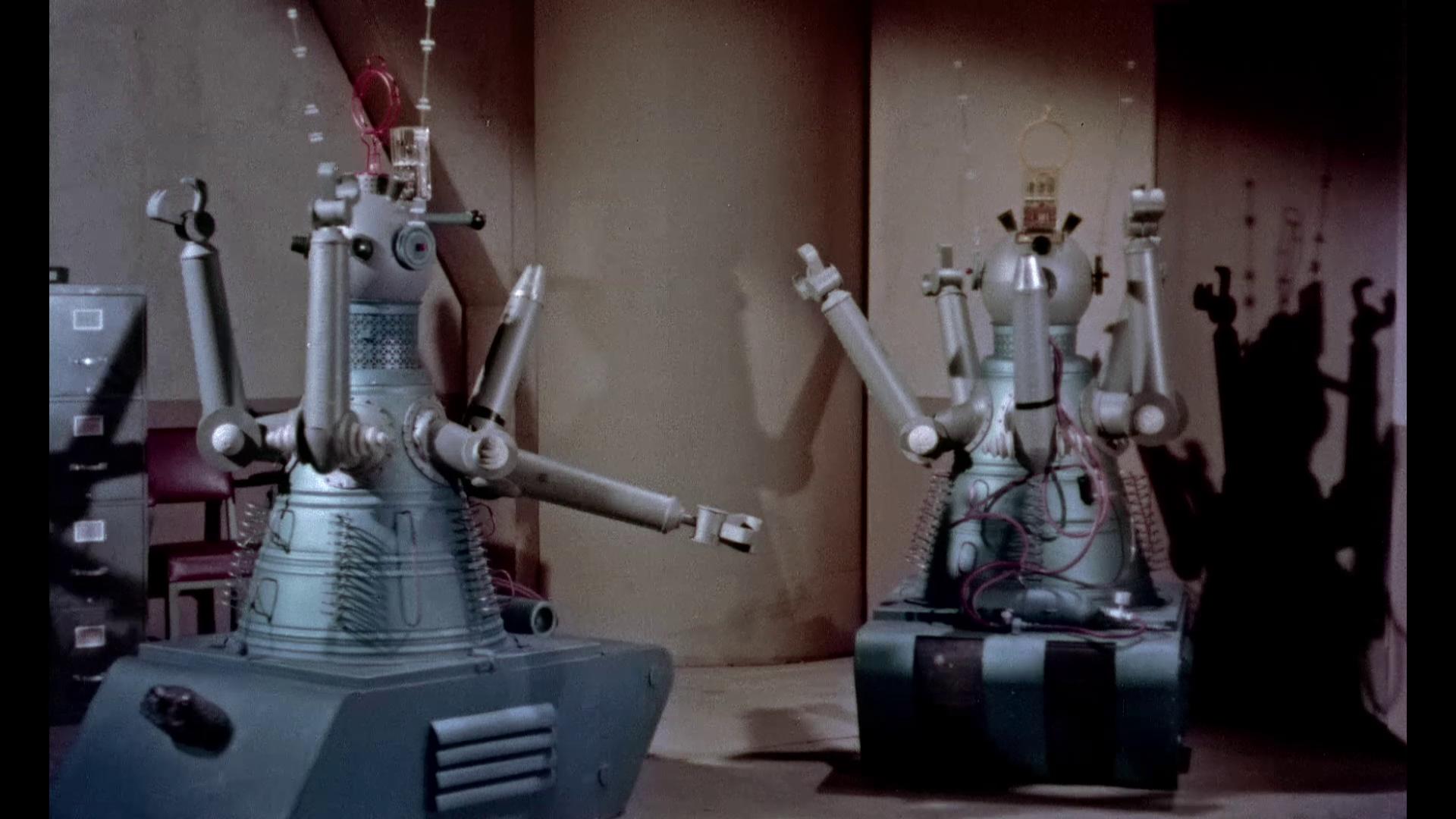
Gog was also shot open-matte but intended to be projected at a 1.66 ratio (billed as "Horror-Scope"!)- previous video appearances were unmatted exposing boom mikes and the like, but this disc presents it correctly with slight side bars. As said above, the 3D is very immersive even though there are few gimmick shots or obvious attempts to exploit it- which may be a relief for some viewers and a disappointment for others. Had all of the "big" movies been shot in 3D from this point forward as was originally planned, it's likely they would have looked similar to this in terms of not hitting the audience over the head with 3D effects, and you could say the same about many of the recent 3D movies. The picture is nicely detailed (you can see strings on the robots) with color appearing slightly faded but likely intentional to the original presentation. I noticed some slight compression artifacts in a couple of darker scenes but most of the movie looked fine.
Besides being in 3D at all, it's a miracle how great this movie looks after learning what poor shape the original print was in. The left-eye view was especially bad with most of the color faded, but by casually watching this disc one would hardly know. I did notice a bit more dirt in the left eye for one moment which was the tip-off to me of which view was in the worse condition, but even then it's a miracle that the transfer looks as good as it does here. The disc also includes an option to play the movie in plain old 2D.
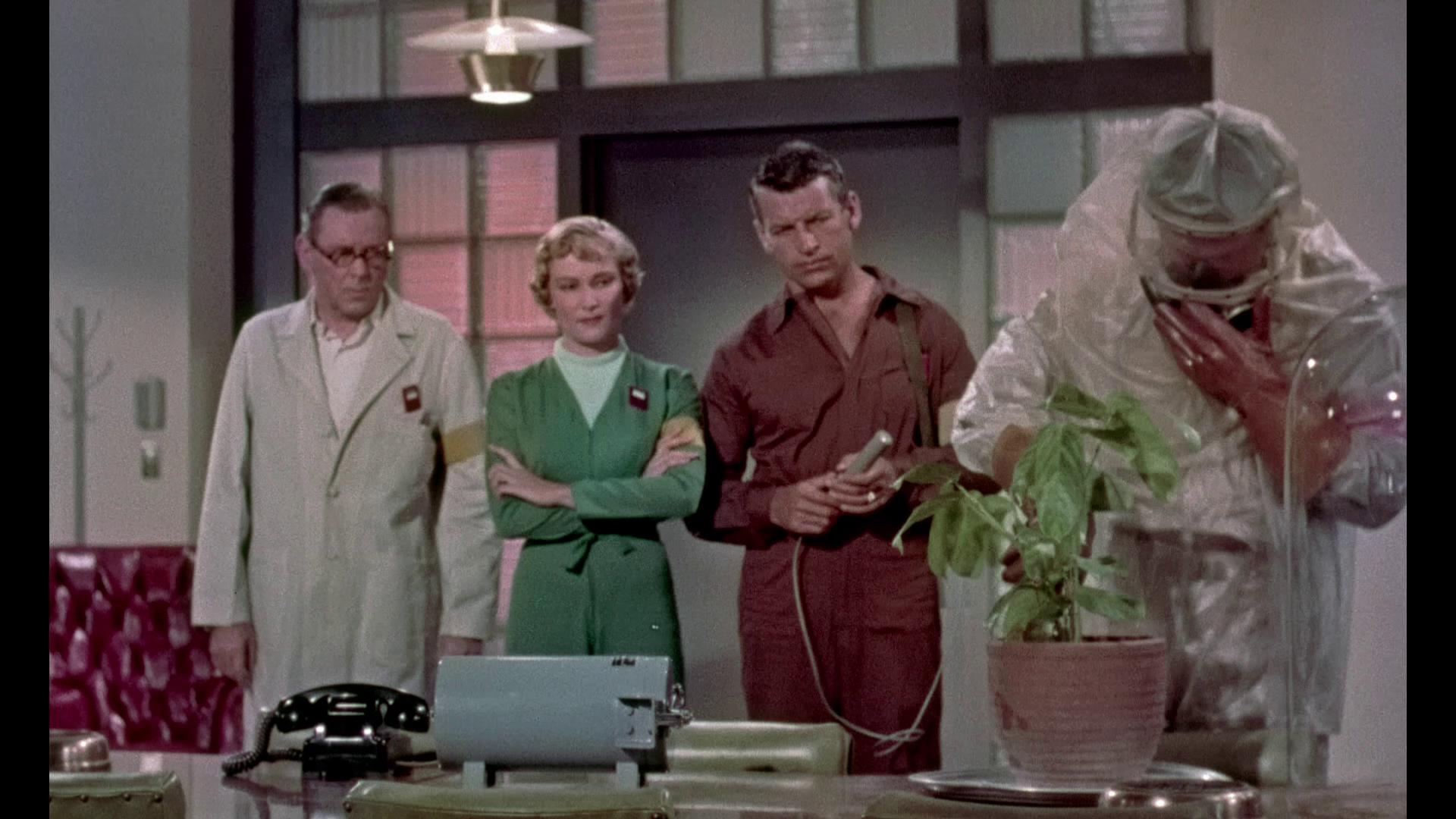
The mono audio track is presented here in 2-channel DTS Master Audio and the disc is flagged to output it as a straight bitstream, so my Pioneer receiver stubbornly played it through the front left and right speakers rather than the center. The sound still stayed centered well enough sitting in the right spot, and the quality is reasonably clear for its age without any excessive noise.
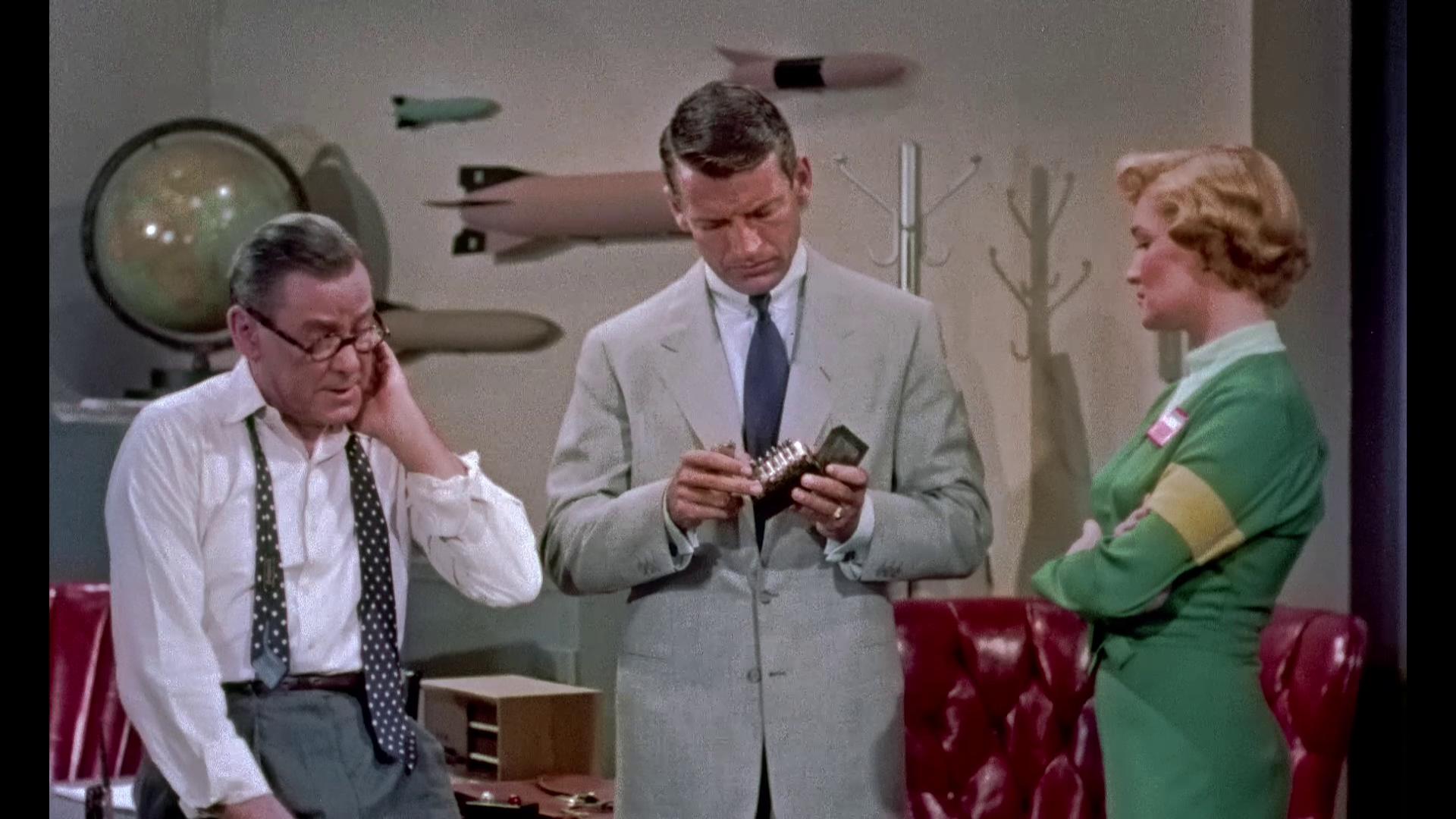
Again, this is a release whose extras will make you appreciate the movie far more than a simple viewing alone would have. A 3D restoration demo is included, where 3-D Film Archive's Greg Kintz and Bob Furmanek briefly explain the Natural Vision camera system and the way 3D movies were projected at the time. Furmanek also shows us how the left-eye view looked upon discovery, and compares it to the finished restoration. While we don't get to see exactly how this was accomplished, the results are certainly amazing given that it was done with fewer resources than the major studios have available. There are also two standard-def video interviews shot in the early 2000s- one with director Herbert L. Strock talking a bit about the movie's production, and another with Lothrop Worth, one of the inventors of the Natural Vision 3D camera system who talks generally about his years in the movie business. A few trailers in 2D, but flagged for 3D so you can keep your glasses on, are also included: a rather worn trailer for Gog which makes the movie look more exciting than it actually is, along with The Mask, an early 1960s movie in 2D black-and-white with some bizarre 3D hallucination sequences, and a teaser for 1966's The Bubble and its 1976 reissue under the title The Fantastic Invasion of Planet Earth.
The real prize here is the audio commentary track with film historian Tom Weaver giving a wealth of information about the movie's production, story and cast, although rarely pertaining to what's happening onscreen as we watch the movie. Two guest commentaries are interspersed with this- one from 3-D Film Archive's Bob Furmanek who gives us a few more details about the restoration, mentioning that he used the printed newsletter "The Big Reel" to find most of his acquisitions in the pre-internet days. I had looked through a few copies of that publication myself, amazed at what was out there but unsure if I'd ever get my hands on any of it. Film music expert David Schecter also spends a few minutes talking about composer Harry Sukman and his score for Gog, pointing out how it was strategically used to heighten some moments but how many sequences used no music at all. DVD Savant Glenn Erickson also gets a shout-out for his observations on the set design. Overall an extremely informative listen.
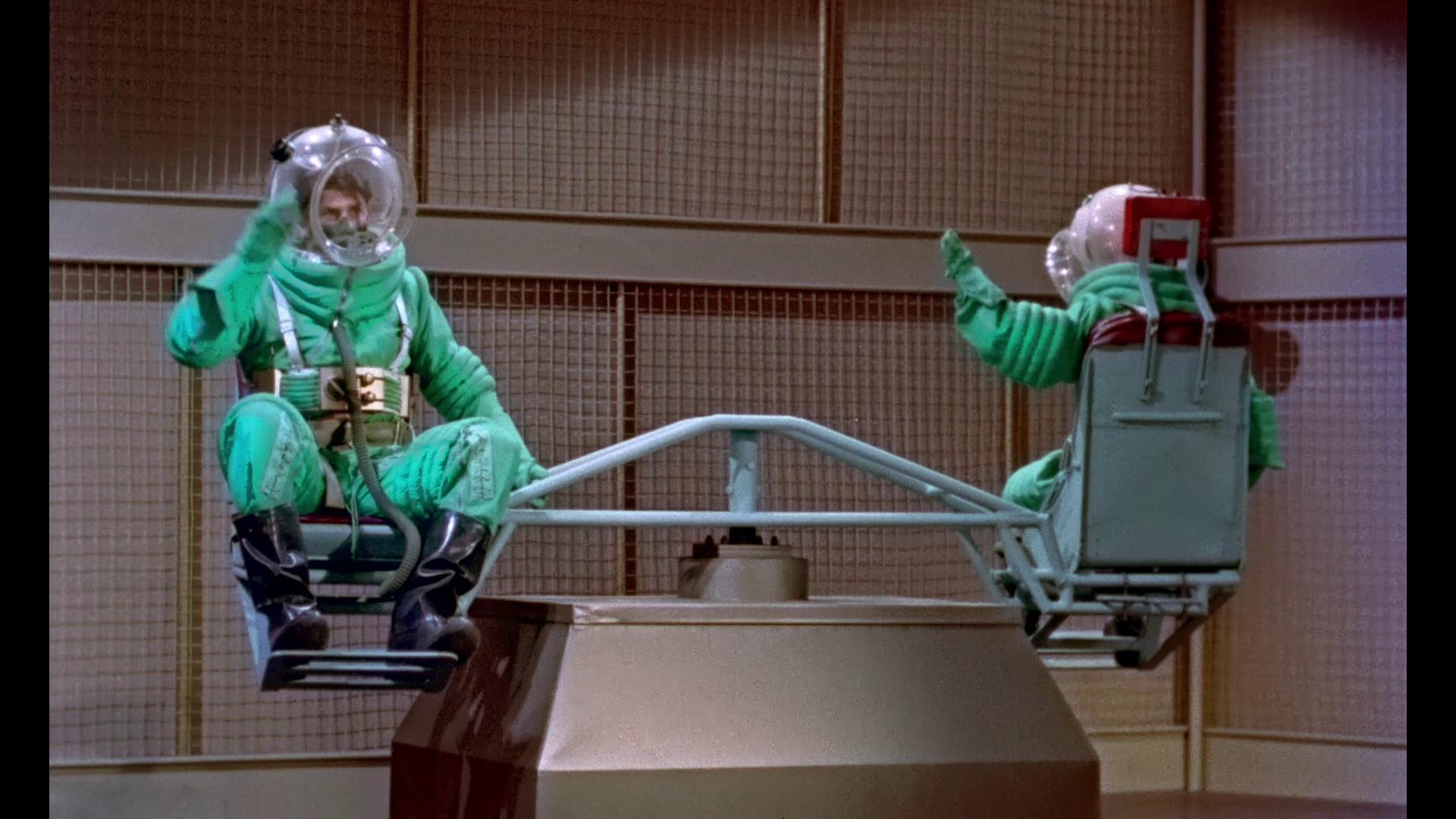
I didn't think too much of Gog as a movie on first viewing, and while the 3D photography is nicely done it doesn't have the "wow" factor that other 3D movies of this era had. Still, it has its place in science-fiction history and I found the story of this movie's restoration more fascinating than the movie itself- I've always believed in preservation of almost every form of printed or recorded material, even what might seem insignificant, as many times elements have been lost to time from the lack of foresight of those who should have known better. Regardless of one's opinion of this movie, its 3D presentation on this Blu-Ray disc should be seen nothing sort of a miracle and the release is a must-own not just for fans of 3D but film preservation in general. Kudos to Mr. Furmanek and company and I'll eagerly await what they come up with next.
Jesse Skeen is a life-long obsessive media collector (with an unhealthy preoccupation with obsolete and failed formats) and former theater film projectionist. He enjoys watching movies and strives for presenting them perfectly, but lacks the talent to make his own.
|
| Popular Reviews |
| Sponsored Links |
|
|
| Sponsored Links |
|
|
| Release List | Reviews | Shop | Newsletter | Forum | DVD Giveaways | Blu-Ray | Advertise |
|
Copyright 2024 DVDTalk.com All Rights Reserved. Legal Info, Privacy Policy, Terms of Use,
Manage Preferences,
Your Privacy Choices | |||||||









